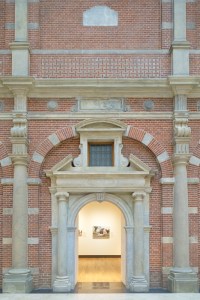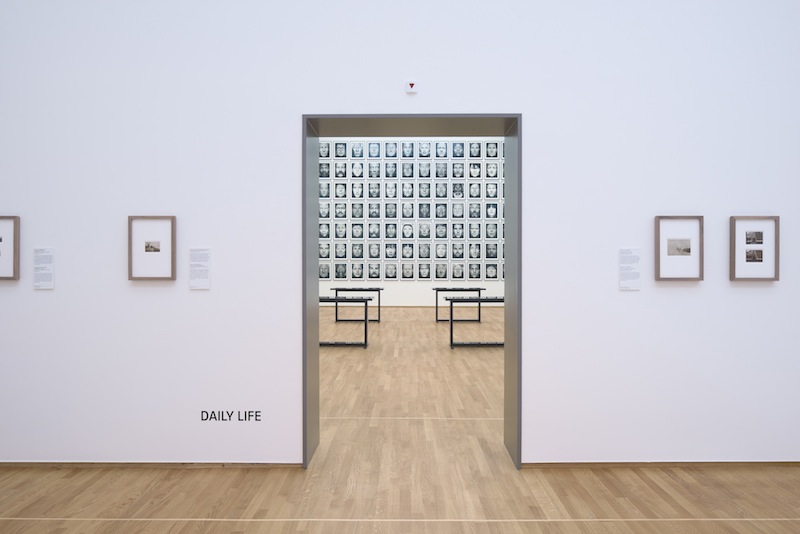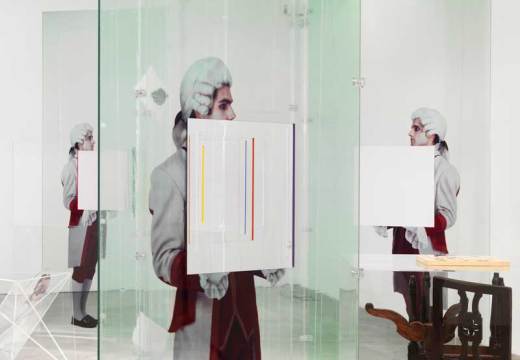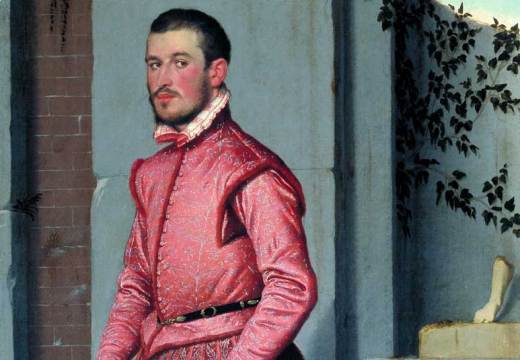In November, the Rijksmuseum unveiled its new exhibition wing, completing the second phase of the museum’s transformation little more than 18 months after the grand reopening of its main building. In keeping with the larger project, the historic buildings of the Philips Wing have been remodelled by the Spanish architects Cruz y Ortiz, who have introduced a very modern lucidity here while drawing attention to existing architectural features. The new entrance hall is a case in point: a relatively narrow enclosure that is opened up by the natural light flooding in from above. That light shows to great advantage a Renaissance stable façade from Breda Castle, incorporated into the museum’s fabric when these buildings were first constructed and now handsomely restored.

The new-look Philips Wing at the Rijksmuseum includes a number of restored features, including this facade from Breda Castle, first integrated into the building when the wing was constructed Photo: Ronald Tilleman
All the same, it’s never easy to get that animated about the opening of new or revamped exhibition wings. Their suites of galleries are best judged not on their appearance when they open, but according to how they accommodate, and can be adapted for displays that change every few months. The renovation of the Philips Wing is certainly an achievement, but its role in the ongoing renewal of the Rijksmuseum is only just beginning.
The opening exhibition here, ‘Modern Times: Photography in the 20th Century’ (until 11 January 2015), is a broad survey of the medium that includes more than 400 works drawn from a wide spectrum of documentary and artistic practices. From an art-historical perspective, it’s a relatively modest affair; but from an institutional perspective, it makes a more audacious statement. While it’s intelligently hung, with many spirited juxtapositions – the works of lesser-known Dutch photographers such as Sanne Sannes and Willem Diepraam abutting those of more internationally renowned figures – its thematic display doesn’t make for much in the way of focused argument.
But it is the objects themselves, rather than their specific arrangement, which seem bold in this context. The Rijksmuseum could have opted to open the Philips Wing with a fail-safe exhibition of Dutch Old Masters
– in fact, with the late Rembrandt exhibition, organised in collaboration with the National Gallery, which will transfer from London to Amsterdam in February 2015. Instead, the museum has chosen to display works from one of its youngest collections, the holdings of 20th-century photography carefully built up over the last two decades. They give a sample of what the Rijksmuseum’s curators, with little opportunity for fanfare, have been grafting at during the lengthy period of closure. And in this way, the exhibition feels like a statement of intent.
The institution’s self-consciousness about that long closure is another reason why ‘Modern Times’ makes for a fitting debut. For most people of my generation the Philips Wing had been, until last year, the de facto Rijksmuseum: while the overhaul of the main building stretched on, it was the only section of the museum that remained open to visitors, housing the ‘Masterpieces of the Dutch Golden Age’ exhibition. Wandering through the whitewashed galleries today, and seeing the previous hang of 17th-century paintings in the mind’s eye, is a type of memory game in which the Rijksmuseum is always the winner. I felt the ghostly imprint of portraits by Frans Hals in a room currently hung with fashion photography; that of Rembrandt’s Portrait of a Woman, Possibly Maria Trip on a wall now displaying ‘Experiments and Studies’; and of the Night Watch in a gallery blazoned with a timeline of 20th-century photography. Whether or not these memories are strictly accurate, the contrast between recent and current use of these rooms repeatedly signals all that the redevelopment of the museum has made possible.
A 50-minute train ride away in The Hague, the opening exhibition in the
new galleries at the Mauritshuis sounds unassuming but is full of insight. ‘Mauritshuis – The Building’ (until 4 January 2015) is a neatly compiled exhibition that capitalises on the focus that the recent restoration of the museum has placed on its design and fabric. It would have been gratuitous here to have attempted anything grander: the reopening of the building has done so much to remind people of what a destination the Mauritshuis is in its own right. It will be worth returning next February, though, when some 36 works from the Frick Collection will be displayed here – the largest group ever to have been loaned from the New York museum.
‘Modern Times: Photography in the 20th Century’ is at the Rijksmuseum, Amsterdam, until 11 January 2015.
Click here to buy a copy of the December issue
Related Articles
First Look: ‘Modern Times’ at the Rijksmuseum
Gallery: ‘Modern Times’ at the Rijksmuseum
Subscribe to get unlimited and exclusive access to the top art stories, interviews and exhibition reviews.Unlimited access from just $16 every 3 months














![Masterpiece [Re]discovery 2022. Photo: Ben Fisher Photography, courtesy of Masterpiece London](http://www.apollo-magazine.com/wp-content/uploads/2022/07/MPL2022_4263.jpg)
It’s time for the government of London to return to its rightful home